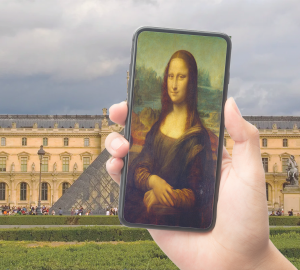A walk through time: Journey through King Tut’s tomb
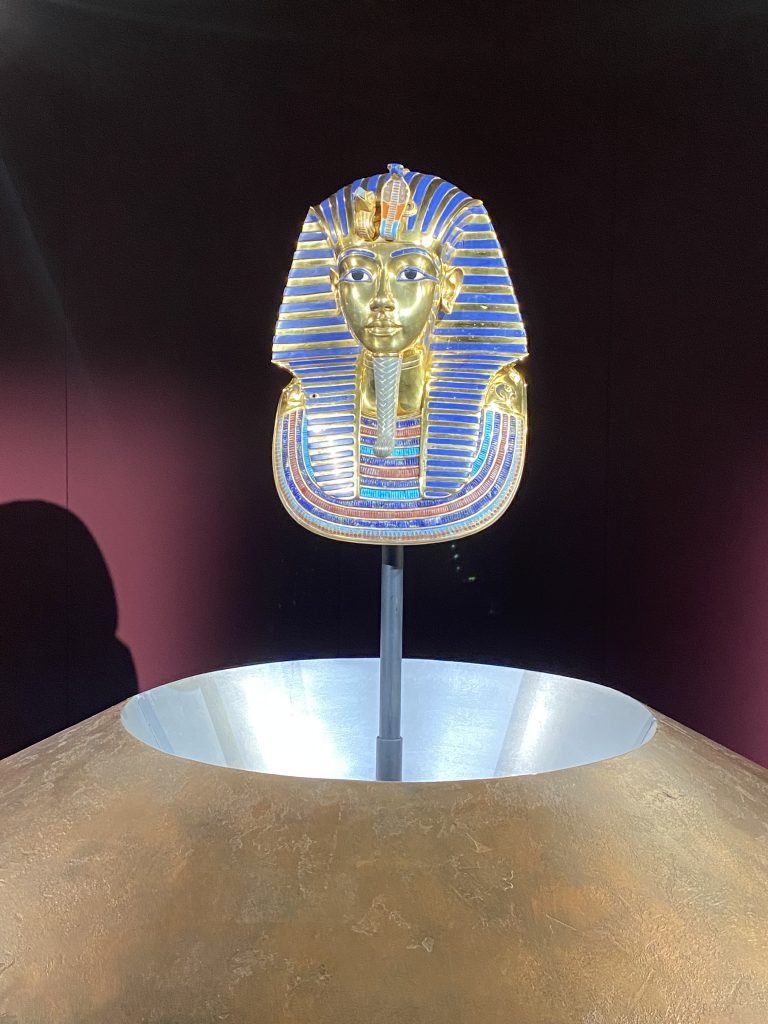
Last Wednesday the Exhibition Hub Art Center had an early press opening for their newest exhibit that the Connector was given the chance to attend. This newest exhibit that they have opened is all about the young Egyptian King Tutankhamun, including all of the hidden treasures that were discovered in his tomb by explorer Howard Carter and his research team.
Before you even enter the exhibition, guests are given small handheld devices that give you an audio-guided tour through the many different artifacts from Tutankhamun’s tomb. The short film at the beginning of the exhibit starts by giving some background on the reign and life of King Tutankhamun, colloquially referred to as King Tut.
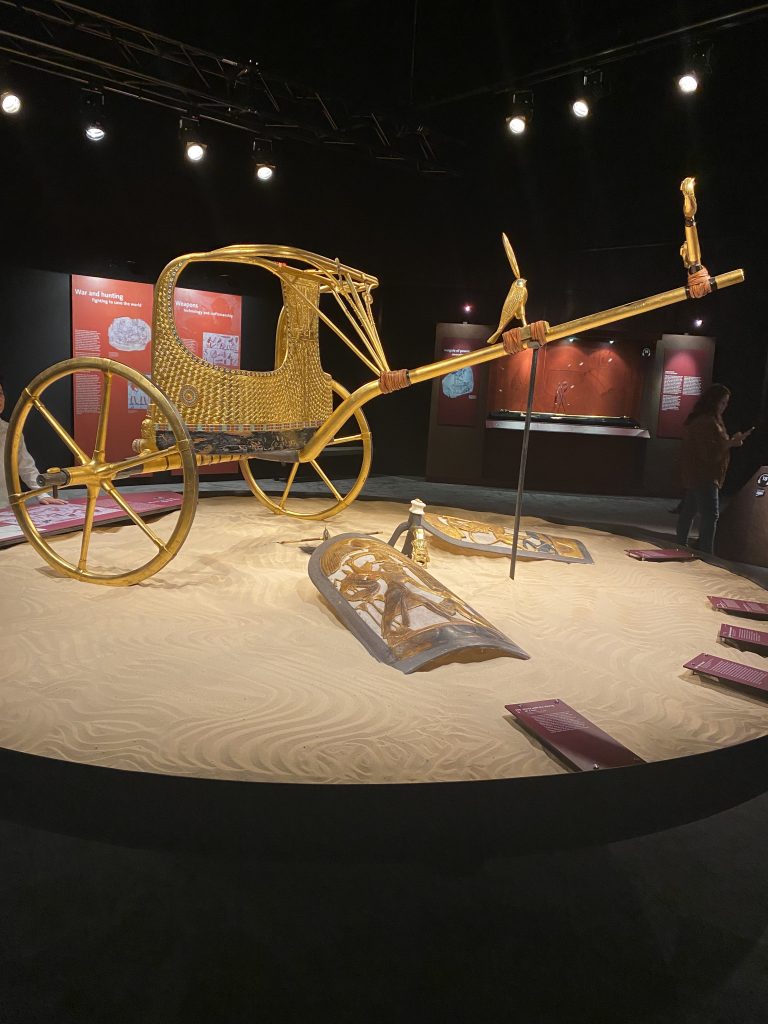
King Tut’s reign began when he was only nine years old up until his death at 19. He became king at a very troubling time in ancient Egyptian history. The previous ruler, Akhenaten, and the changes he made regarding what religion was practiced caused major destabilization throughout the nation. When King Tut took over as ruler of Egypt, one of his first major changes was the reversal of the religious movement started by Akhenaten called Atenism.
King Tut didn’t only stand out because of the young age at which he became an Egyptian pharaoh. He also stood out from other pharaohs because of how he was worshipped as a deity while he was still alive. Most pharaohs would be honored after their deaths, but not King Tut. This praise during his lifetime led to his insane wealth which was only discovered when his tomb was exhumed by Howard Carter in 1922.
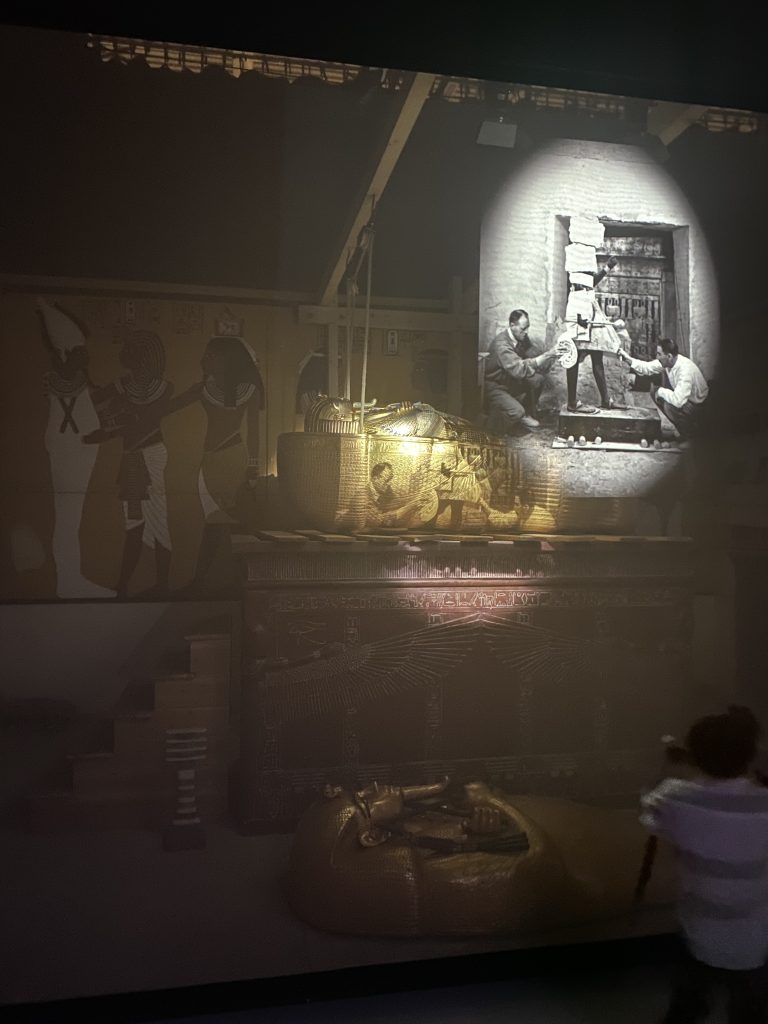
Howard Carter was employed by Lord Carnarvon in 1907, helping supervise excavations for him. In 1914, Lord Carnarvon was permitted to begin digging in the Valley of the Kings and Howard Carter was to lead the excavations. Carter set out from the jump to find a tomb that had been missed by previous excavations; that being the tomb of the king Tutankhamun. His excavations were interrupted, however, when the First World War broke out. He restarted his excavations in the year 1917 but he did not find anything for the next few years.
After multiple seasons of no luck, Lord Carnarvon was ready to pull funding and remove Carter from the project. After the two had an in-depth discussion, they agreed to continue the expeditions to find King Tut’s tomb for one more season. Carter began this expedition searching in an area that they had lightly combed through in an earlier expedition. One day, they stumbled across a stone that, after being dug out, would be revealed to be the stairs leading to the tomb of Tutankhamun. Howard Carter quickly called Lord Carnarvon and he arrived soon after with his daughter Lady Evelyn Herbert. On November 26th, 1922, after the stairway to the tomb was cleared, Carter, Carnarvon and his daughter went down to the entrance of the tomb. Carter began to chisel a hole into the corner of the dirt entrance and peered inside. When Lord Carnarvon asked if Carter could see anything, he excitedly replied “Yes, wonderful things!”.
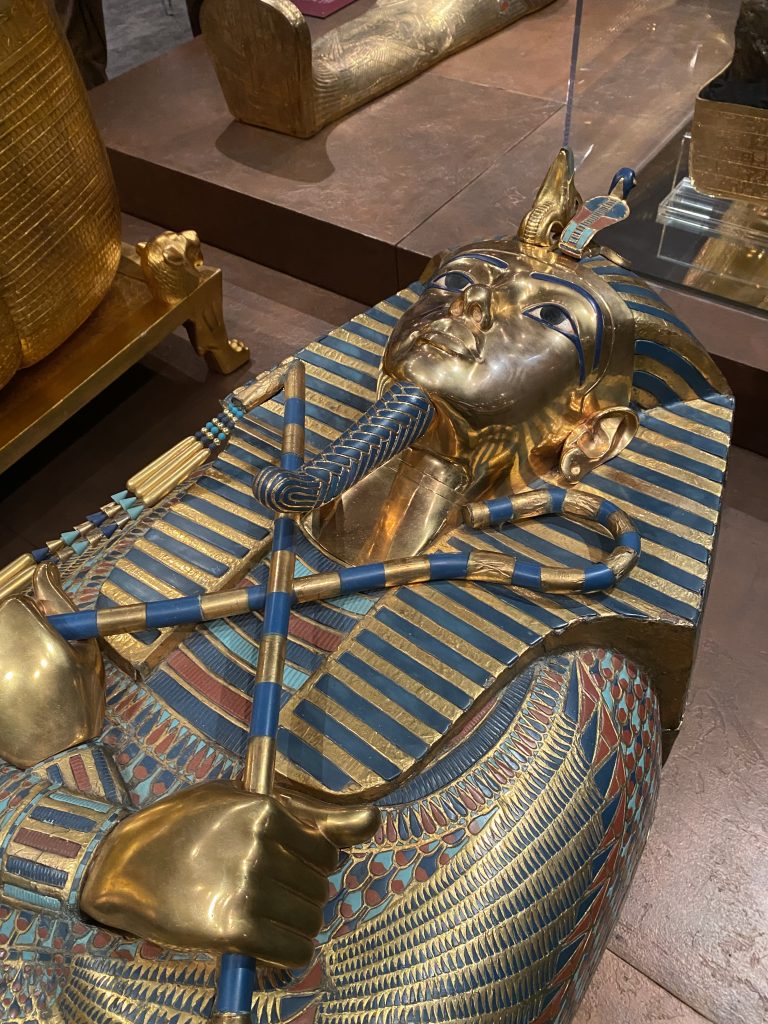
After the introductory movie finishes, guests can then move on to the amazingly detailed replicas of the main items that were found inside King Tut’s tomb. From the ornate mask that covered the King’s mummified corpse to the golden slippers that he wore while he was alive, everything from the tomb of Tutankhamun has been meticulously recreated and put on marvelous display. Every piece has a number designated to it that you can type into your handheld audio device to give you more insightful information.
This exhibit is a treat for any fan of Egyptian history or just history in general, and is now open to the general public at the Exhibition Hub Art Center at 5660 Buford Highway NE in Doraville. Learn more here.























